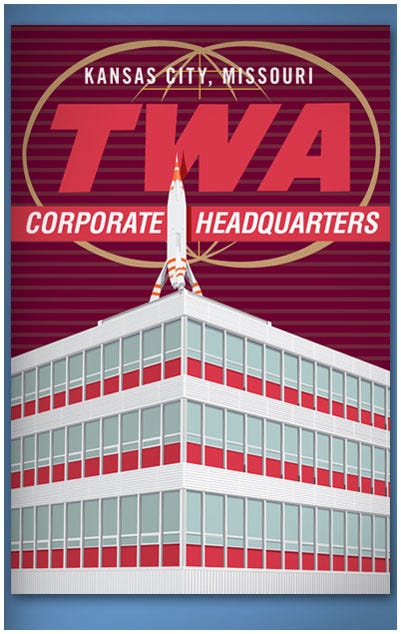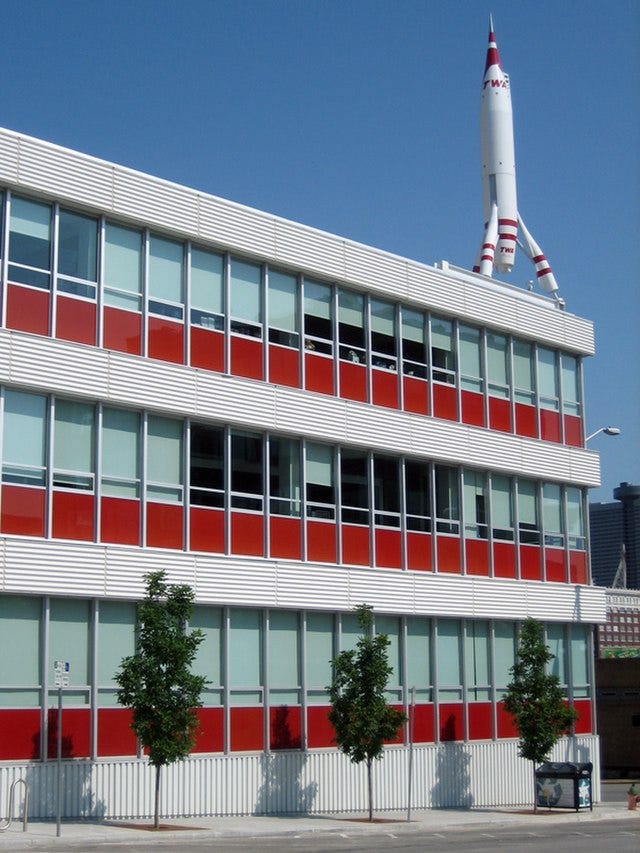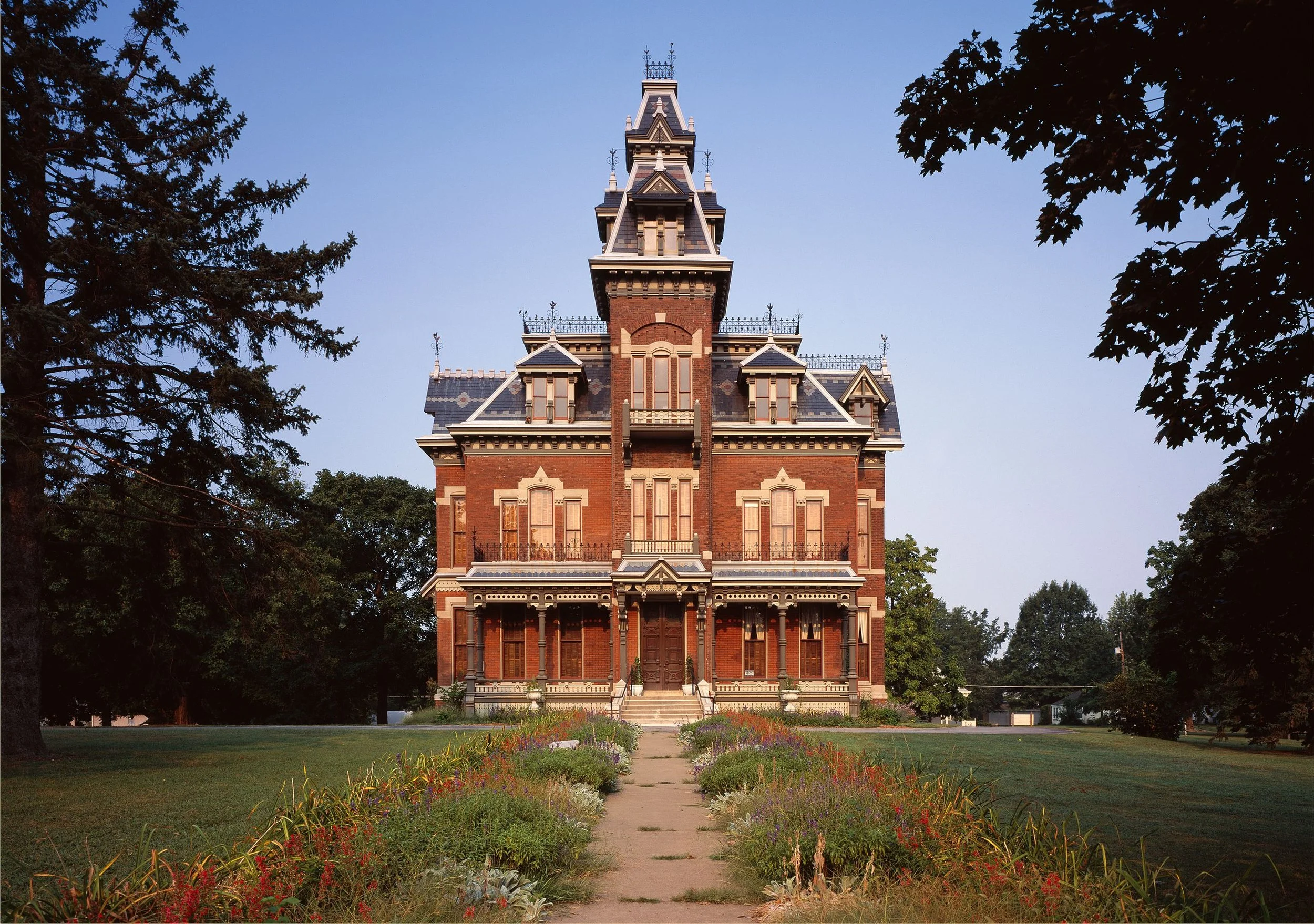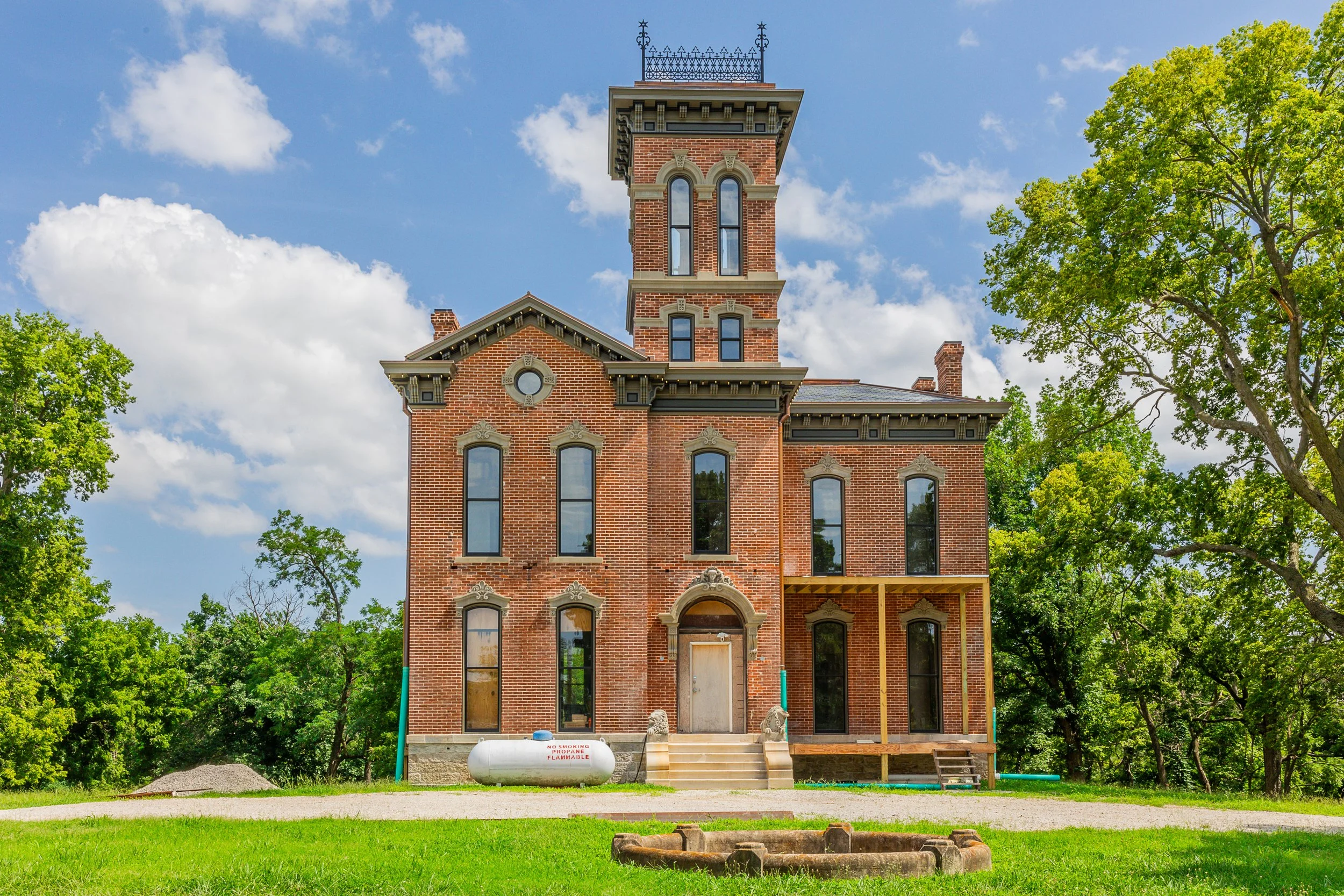The Story of the TWA Building + Rocket in the Crossroads
The Story of the TWA Building + Rocket in the CrossroadsIf you were forwarded this email, click here to subscribe (it's free!) Read this story online | Sponsor this newsletter | Shop 📸 The TWA Corporate Headquarters, located at 1735 Baltimore Avenue in Kansas City’s Crossroads district, served as the nerve center for Trans World Airlines (TWA) from 1956 to 1964. Designed in the International Style by architects Raymond Bales Jr. and Morris Schechter and built by Long Construction Company, the building became a symbol of mid-century modern architecture and aviation advancement. A Pioneering Construction Method
Completed on October 31, 1956, the TWA Building was notable for its innovative Youtz-Slick construction method. Prefabricated concrete slabs were poured at ground level, then lifted into place by hydraulic jacks and secured to steel beams. This technique reduced costs and construction time, allowing the 124,000-square-foot, three-story L-shaped structure to be completed efficiently. Its striking exterior was clad in TWA’s signature red and white colors, with aluminum panels and corrugated concrete giving it a sleek, futuristic appearance. TWA’s Growth and Influence in Kansas City
Kansas City became the heart of TWA’s operations in 1930, thanks in part to Charles Lindbergh’s endorsement of the city’s central location for aviation activities. Under the leadership of Howard Hughes, who acquired a controlling interest in 1939, TWA transformed into a global aviation leader. The airline was known for its commitment to innovation, being the first to introduce pressurized cabins, which allowed for smoother and faster flights, and later pioneering in-flight movies, a luxury unheard of at the time. Hughes’ influence also brought the famed Lockheed Constellation, or “Connie,” to TWA’s fleet, enabling the airline to expand into international markets.
During the Kansas City years, TWA’s operations employed thousands of local residents, creating a massive economic impact on the region. The headquarters building at 1735 Baltimore became the hub for departments like accounting, sales, advertising, and cargo logistics. This era also marked TWA’s evolution into the Jet Age, with Kansas City serving as the staging ground for milestones like the introduction of Boeing 707 service. By the mid-1960s, TWA was offering all-jet service for domestic and international routes, becoming a household name in luxury air travel and a cornerstone of Kansas City’s economic development. The Moonliner II Rocket
The Moonliner II rocket, a 22-foot-tall replica of Disneyland’s iconic Moonliner, became a defining feature of TWA’s Kansas City headquarters. Originally installed on the building’s rooftop, it symbolized the airline’s commitment to innovation and its connection to the burgeoning Space Age. The Moonliner II was a smaller version of the 76-foot original at Disneyland’s Tomorrowland, which TWA sponsored from 1955 to 1962. The rocket bore TWA’s red and white branding, emphasizing the airline’s role in the future of transportation and its ambition to connect people not just across the globe, but potentially to space. When TWA sponsorship of Disneyland ended, the Moonliner II was removed and eventually sold to a local travel trailer company, where it fell into disrepair. After years of neglect, it was carefully restored by a Disney enthusiast and now resides at Kansas City’s National Airline History Museum. As part of the TWA building’s restoration in 2006, a brand-new replica of the Moonliner II was fabricated and installed at its original rooftop location. Decline and RestorationTWA relocated its executive offices to New York in 1964, though the Kansas City building remained in use until 1969. Following years of vacancy and disrepair, it was added to the National Register of Historic Places in 2002. A $15 million renovation restored the building to its original appearance, complete with a replica Moonliner II. Since 2006, it has housed offices for the Barkley advertising agency. The Rocket Story by Barkley 🎥 ⬇️ This Week's Featured Historical LocationThe Loretto Academy began in 1903 as a Catholic girls' school in Kansas City, known for its academic rigor, inclusive values, and Georgian Revival architecture.
This Week's Featured Home6215 Ensley Ln, Mission Hills, KS 66208
Realtors: interested in sponsoring this section to 10K+ readers? Just email me at hello@kcyesterday.com! Thanks for reading Reader! ps: then vs. now of Satchel Paige Memorial Stadium at 51st & Swope Pkwy, which has served as a sports venue for over a century. |
Stories from the City - History of Kansas City
Join thousands of others and discover Kansas City's captivating history every week with the exclusive newsletter from KC Yesterday. Sign up now to unlock fascinating stories about the mafia, architecture, prohibition, sports, and everything in between!
The Story of Vaile Mansion in Independence If you were forwarded this email, click here to subscribe (it's free!) Read this story online | Sponsor this newsletter | Shop 📸 Courtesy LOC/Carol Highsmith. The Vaile Mansion in Independence, MO is one of the most notable surviving examples of Second Empire architecture in the United States. Built in 1881 for Colonel Harvey Merrick Vaile and his wife, Sophia, the residence was designed by Kansas City architect Asa Beebe Cross and inspired by a...
The Story of Corinthian Hall If you were forwarded this email, click here to subscribe (it's free!) Read this story online | Sponsor this newsletter | Shop 📸 Perched high in the Scarritt Point neighborhood, Corinthian Hall is among Kansas City’s most architecturally and historically significant homes. Built in 1910 for lumber magnate Robert A. Long, the mansion was a statement of wealth, civic ambition, and refined taste. It was designed by architect Henry F. Hoit, who would go on to shape...
The Story of Sauer Castle (1873) If you were forwarded this email, click here to subscribe (it's free!) Read this story online | Sponsor this newsletter | Shop 📸 KC Yesterday Sauer Castle, located at 935 Shawnee Road in Kansas City, Kansas, is one of the region’s most recognized examples of Italianate architecture and one of the most historically significant residences in the city. Construction began around 1871 and was completed in 1873 as the home of German immigrant Anton Sauer and his...






